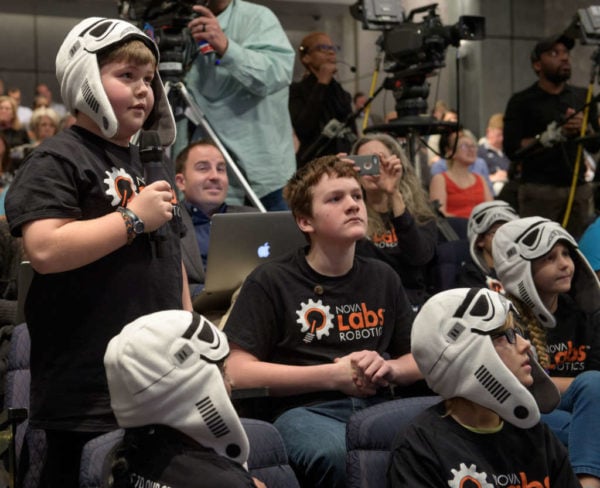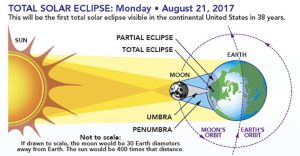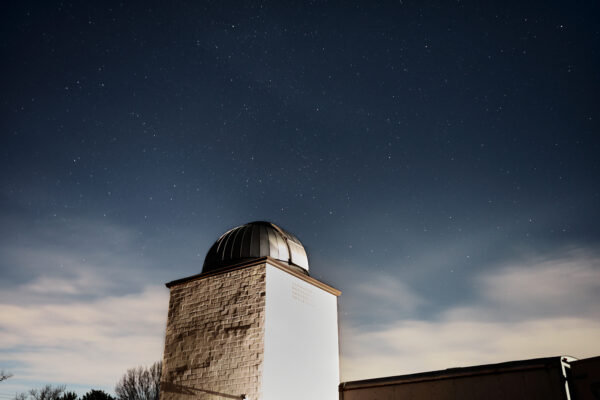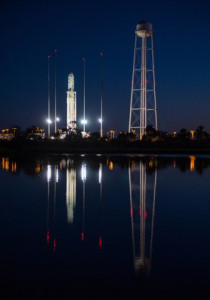Be prepared: A science-related night under the star is getting ready for liftoff.
The educational event at 7 p.m. Saturday will bring hands-on activities to Turner Farm to help commemorate the Dec. 18 launch of the James Webb Space Telescope.
The hourlong event invites Girl Scouts to learn about telescopes, particularly the new Webb telescope. NASA notes that the telescope will view the universe at infrared wavelengths, helping show things never seen by any other telescope, to help study galaxy, star and planet formation.
“We are thrilled that the Park Authority is an official host site for NASA’s James Webb Space Telescope launch community events,” Tammy Schwab, manager of Fairfax County’s Education and Outreach for Resource Parks, said in a news release. “People of all ages and backgrounds will find inspiration in the Webb mission, which will fundamentally change our understanding of the universe for this generation and many to come.”
Hundreds of events across the country are recognizing the upcoming launch of the telescope, which is roughly the mass of a school bus. At the Great Falls event, participants can earn Space Science badges.
The county is partnering with an educational astronomy group, the Analemma Society, to help with providing telescopes for the event. Cost is $8 per participant, and chaperones (who pay no attendance fees) are required. Register online.
Schwab said a virtual event on Nov. 20 will feature a NASA scientist.

(Updated 3 p.m.) Gabe Aparicio, a 9-year-old Reston student, has been working on a project that involved 3D printing for space technology and had some questions. So who better to ask than a board of NASA experts?
A photo of Aparicio asking a question at a Nov. 29 meeting regarding commercial space traffic was NASA’s featured “Photo of the Day”.
“It was a really great opportunity to hear about the technology he only normally sees in movies,” said Sam Aparicio, Gabe’s father. “It was quite a treat.”
Aparicio is a member of the “BrainStorm Troopers”, a team of students at the Nova Lab Robotics in Reston. The labs are a maker space in Isaac Newton Square that, among other activities, runs programs that help children learn about science and technology.
Laura Carey, one of the co-coaches for the team, said the name was chosen by the avid Star Wars fans in the group.
The BrainStorm Troopers are one of the Nova Lab Robotics teams working in the FIRST Lego League, a challenge for students ages 9-11 built around designing robotics with legos to combat a certain challenge. This year, BrainStorm Troopers’ challenge was called Into Orbit, tasking students with identifying challenges humans would face in deep space exploration and work on devising a solution.
“They use the Legos to build robots,” said Marybeth Haneline, President of Nova Labs. “For their research question they looked at 3D printing in space, so [Gabe] asked NASA about 3D printing.”
Haneline said students at Nova Labs Robotics were some of several teams throughout the region invited to NASA’s discussion of delivery of commercial payloads to the moon’s surface.
“They have been working all season long to understand what is the role of 3D printing in space exploration,” said Sam Aparicio. “It was really cool for him and his teammates to get validation that this is an area of great interest for NASA engineers. That was one of the highlights of the event.”
Sam Aparicio said Gabe’s involvement with BrainTroopers has not only been fun for a child who loves building with Legos but has also helped shape skills outside of science and technology.
“I’ve been enjoying seeing how this can translate into real-world problem solving,” said Sam Aparicio. “I think one of the big things, not just my son but all of the kids, is that they love learning about teamwork. In the school setting, harder for all of the kids to work on one problem… It’s just been fun for them to bond with other kids in trying to solve a big problem.”
Haneline said the Nova Labs Robotics teams are sponsored, in part, by donor corporations like BTI360 and the American Institute of Aeronautics and Astronautics.
Haneline noted that Nova Labs Robotics is currently in a dedicated space in Isaac Newton Square, which is soon to be redeveloped, so the group needs to find a new home by the first of the next year.
“We’re looking for a corporate donor who might be willing to donate some space,” said Haneline.
Photo via NASA/Bill Ingalls
 Seventeen days from now, a lot of people are going to be staring up at the sky.
Seventeen days from now, a lot of people are going to be staring up at the sky.
Locally, the Fairfax County Park Authority wants to make sure they’re doing it safely.
The first total solar eclipse over the continental United States in 38 years will reach us at 2:42 p.m. on Monday, Aug. 21. In Fairfax County, about 80 percent of the sun will be blocked by moon. The full solar eclipse will be taking place at that time in South Carolina.
NASA warns that the only safe way to view the sun, even when it is partially eclipsed, is with the use of special-purpose solar filters or hand-held solar viewers. The American Astronomical Society has provided a list of reputable vendors for these glasses.
Every child who attended one of the Park Authority’s Adventures Away Rec-PAC camps this week received a pair of solar-viewing glasses courtesy the Fairfax County Park Foundation. Remaining glasses will be made available to the public at select parks, where a donation can help cover the costs.
The eclipse can also be viewed, with your back to it, by using a pinhole projector. The Park Authority is offering some programming to teach people how to make these.
Fairfax County also has numerous events planned for watching the eclipse, including on Burke Lake and Lake Accotink.
Graphic via NASA
A rocket that was scheduled to take off from the Virginia coast Tuesday night exploded on the launch pad, several news sources reported.
CNN reports that no one was injured in the unmanned rocket.
“There was failure on launch,” NASA spokesman Jay Bolden told CNN. “There was no indicated loss of life.”
The launch was set to carry some 5,000 pounds of supplies and experiments to the International Space Station.
Orbital Science’s Antares rocket was originally scheduled to take off Monday at 6:45 p.m. from Wallops Island, Va., and its track would have been visible from Reston and other East Coast areas. Monday’s launch was delayed due to a boat in the area.
NASA officials are trying to determine the cause of the explosion.
NASA will be offering more info, including video and a news conference on its website.
Photo: NASA via YouTube
(Updated, Tuesday, 8:33 a.m.)
NASA’s launch of the Antares rocket was scrubbed at the last minute Monday night because of a boat in the launch area.
The launch as been rescheduled for 6:22 p.m. on Tuesday, NASA says. It should be visible in the sky over Reston as it takes off from the Virginia coast.
NASA’s Wallops Flight Facility and Virginia’s Mid-Atlantic Regional Spaceport were set to launch Orbital Sciences’ Antares rocket and Cygnus spacecraft Monday night at 6:45 p.m.
The two-stage, 131.5-foot-tall Antares uses a liquid-fueled first stage powered by two Aerojet Rocketdyne AJ26 engines and a solid motor ATK CASTOR 30XL upper stage to boost Cygnus into orbit, says NASA.
Says NASA:
The powered launch sequence lasts about nine-and-a-half minutes from liftoff through the separation of Cygnus from the launch vehicle.
This mission, CRS-3, will carry about 5,050 pounds (2,290 kilograms) of cargo, the heaviest load yet delivered by a Cygnus to the International Space Station. (CRS-2, which launched in July, held 3,293 pounds of cargo.)
Check out this map from NASA that shows the best times to view the launch on the East Coast. NASA will again broadcast the launch live on NASA TV beginning at 5:45 p.m.
Photo Credit: NASA/Joel Kowsky



